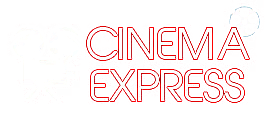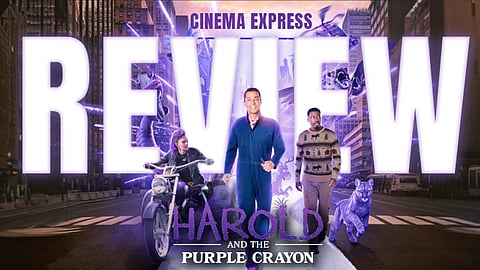Harold and the Purple Crayon Movie Review: A competent premise pulled down by a lack of imagination
Harold and the Purple Crayon (2 / 5)
In one scene in Harold and the Purple Crayon, a character tells Harold that his magical crayon makes anything drawn with it real, including Harold himself. He then goes on to add that the crayon does that because it is made of the most mysterious, powerful stuff on Earth: pure imagination. One cannot help but think of how the film itself lacks imagination. None of its computer-generated imagery feels imaginative, let alone original. Sure, it does take some skill and imagination to create the flying dragon, an aeroplane that whizzes past skyscrapers in a metropolis, a large, colourful spider with wings, and so forth. And to give credit where it is due, some of the visuals do pop. However, the CGI mostly feels mechanical and lacks the organic spontaneity and unpredictability of true imagination. It has an overbearing effect on the storytelling as well.
Director: Carlos Saldanha
Cast: Zachary Levi, Lil Rel Howery, Zooey Deschanel, Benjamin Bottani, Tanya Reynolds, Jemaine Clement
Almost every classic children's film successfully evokes a sense of awe while telling its story from the perspective of a young boy. For example, when ET decides to take Elliott Taylor and his friends for a levitating ride in Steven Spielberg's ET: The Extra-Terrestrial, the kids go "wow," and so does the audience. Despite the advancements in technology, the moment still has the same effect on the viewers. Harold and the Purple Crayon tries to recreate the same ET moment with two alien adults, Harold (Zachary Levi) and Moose (Lil Rel Howery), and a child named Mel (Benjamin Bottani). Except, here, there is a plane in place of levitating cycles. The moment feels derivative and fails to elicit the same level of excitement and wonder in the audience.
This brings us to the other major issue with Harold and the Purple Crayon. The film tries to make Zachary Levi and Lil Rel Howery act like children. But despite their earnest attempts, it comes across as an unnatural and insulting way of mimicking childlike behaviour, which leads to an exaggerated sense of childishness and overly simplistic thinking. It feels inauthentic and creates a disconnect with the audience, making it difficult for them to connect with the characters and the story.
It also does not help that Zooey Deschanel’s character Terri continues to dismiss her son Mel’s dragon friend and his theory about the magical purple crayon as merely imaginary. She remains a sceptic for far too long in the film, thus undermining its magical premise and distancing the audience from the child's perspective. And while Benjamin Bottani exudes boyish charm and boundless energy, it all goes down the drain when the film uses him as a mouthpiece for the brand Crayola.
Tanya Reynolds as Porcupine adds very little to the main story and serves as a distraction from it. The film also stars Jemaine Clement as Gary Natwick, an aspiring author and a librarian with a twisted idea of Harold and his world of fantasy. The transformation of Gary is a clever idea on paper but seems contrived and sudden in the final output. It should take a little more than professional failures for a man like Gary to go completely insane. The film fails to convincingly show us why he becomes what he becomes. Perhaps the only bright spot, apart from some of the humour, is that Harold and the Purple Crayon is fast-paced and harmless.


